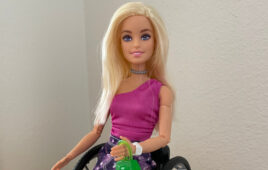
PHOTO OF BLAIR CASEY COURTESY TEAM GLEASON
As Executive Director of Team
Gleason, Blair Casey travels the
world to share the organization’s
goals of driving technological innovation
to support people with ALS.
For Casey, the work is personal.
“I was familiar with ALS, because at
a young age I volunteered for the
Muscular Dystrophy Association,” he
said. “I had an idea of what the disease
was, similar to muscular dystrophy or
Friedreich’s ataxia. But I didn’t have an
intimate relationship with ALS.”
Becoming a Caregiver
 But the New Orleans Saints football
But the New Orleans Saints football
team’s training camp was in
Mississippi, where Casey went to
college and played college football.
While in school, he crossed paths
— again — with Michel Varisco, who
had been his childhood babysitter,
and learned she was dating Saints’
safety Steve Gleason.
“Every day, the guy would talk
about life, love, culture, family,
conversations you don’t have at the
age of 21,” Casey said of Gleason,
who later married Varisco. “Meeting
somebody that I looked up to… this
guy exceeded my expectations as a
human.”
Casey worked for Gleason while
in graduate school, “helping with his
finances. I went on to be an accountant,
but it was the relationship that
I had with [Varisco and Gleason]…
they opened my eyes to how to
approach life and people differently.”
When Gleason was diagnosed with
ALS in 2011, Casey quit his job to
become Gleason’s caregiver and the
accountant for the new Team Gleason
foundation. Casey’s experiences were
included in the critically acclaimed
2016 documentary Gleason.
“I have first-hand knowledge,”
Casey said, “a very intimate knowledge
of the struggles, the pain, the
reality, but at times, some of the
beauties that come from such a very
difficult disease.”
What People with
ALS Are Seeking
What do people with ALS and their
families want when they approach
Team Gleason? Are they looking for
resources? Assistive technology? An
emotional support system?
“I would say it’s all of the above,”
Casey answered. “It depends on
who it is, if it’s the person that has
ALS or if it’s a caretaker, oftentimes a
family member. I think they approach
the conversation the same, yet
differently.
“The person with the disease
oftentimes is looking for resources
or has gone down the deep, dark
Internet and is looking for clarity in
direction. Ultimately, they’re looking
for resources and access, but being a
caretaker myself — when my journey
began, I recognized the importance
of ensuring you’re well rested,
that you’re taking care of yourself.
Because with ALS or in life, you go
through hard times, and everybody
needs to be well rested so that when
things do get difficult, you’re mentally
and emotionally prepared to fight
when you have to. As opposed to
being drained all the time.”
Casey said the organization “can
get ahead of that by ensuring families
know that there are resources,
specifically with Team Gleason, its
technology and equipment. We
have tools that will be there with you
and for you along your journey. And
if there are questions about other
resources you’re looking for, don’t
hesitate to ask. Because we work
with other ALS organizations that
may specialize in access to research,
treatments, trials, care.”
Getting the best technology to
people living with ALS is a crucial part
of Team Gleason’s mission. “If you
look back at people that live with ALS
for a long time — Stephen Hawking
lived with ALS for 52 years —
that was the first example of the
benefit of assistive technology
increasing quality of life,” Casey said.
“What ALS takes away, technology
and equipment give back. Without
these assistive technologies, you
wouldn’t be able to continue to do
what you love, to be independent, to
pursue purpose in life, as we all do.
“What’s the most high-priority
aspect of it? I would say that what’s
currently available is coded and
funded so that there’s access to it
and financial support for it. That
there’s training. And there’s also the
evaluation portion of it. Ensuring that
clinicians are properly evaluating,
whether it’s AAC [augmentative and
alternative communications] or it’s
feature matching to ensure that what
somebody is getting is the right fit
for them. Every component is equally
important here, as well as looking
beyond to what’s next.”
What Caregivers Know
Casey added that new technology
needs to help everyone. “As a
caretaker while traveling, I would
bring a BiPAP, a ventilator, a cough
assist, a suction. Oftentimes you
don’t use any of those, but you need
to have them. Imagine bringing
those on top of all the [AAC] device
mounting, wiring, wheelchair,
wheelchair accessories, headrest
components. Fortunately, a company
called Ventec made a device called VOCSN — ventilator, oxygen, cough
assist, suction, nebulizer. They made a
five-in-one.
“As someone who remembers
being in an airport and carrying all
these things, on top of making sure we
weren’t breaking or leaving anything
behind… it’s a lot of responsibility.
And because this equipment is integral
to the person with the disease’s
life and ability to live independently,
they can’t be overlooked. It needs to
be easier. For everybody.”
In addition to fully including people
with disabilities in product development,
Casey said caregivers also
need to participate. “If you’re going
through the product design process,
it shouldn’t be a group of people
that are making something to make
something,” he said. “It should include
those that it’s intended to serve, both
the person with the disease and the
caretaker. Because they’re equally as
important to understand the environmental
barriers or the real needs of all
parties involved.
“That environment includes
family and children. It includes your
surroundings. Maybe your bedroom
is in this part of the house and there’s
stairs inside. There’s an array of environmental
factors.”
Casey said Team Gleason learned
that the hard way. “If you’re developing
a product without the person
that it’s intended to help in the family,
without the caretaker involved, it’s not
going to help anyone. It’s not.
“We started Team Gleason in 2011,
and in the first two years, I remember
working with families and sending out
communication devices. We weren’t
doing it properly. It took us a very
short amount of time to recognize that
we have to understand from a clinical
perspective, from a patient perspective,
a caretaker perspective, a support
and environmental perspective. All
these things have to be taken into
consideration upfront, in the design,
into the evaluation and ultimately into
the support in the home. If it’s not done
that way, it’s going to harm the community
more than it’s going to help.”
Team Gleason’s technology training
now includes families and caregivers.
“The way you educate a family about
equipment is different from a clinician,”
Casey said. “Team Gleason
does a fantastic job of understanding
the needs of the community, because
we’re getting over 430 requests a
month. And our team is working hand
in hand with people with the disease
and their family, caretakers, clinicians.
All of this allows us to better help
improve and provide the best while we
improve the future.
“ALS takes a village. Our team is
that village, as it relates to what we
provide and what we advance.”

